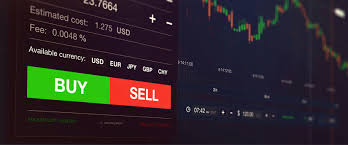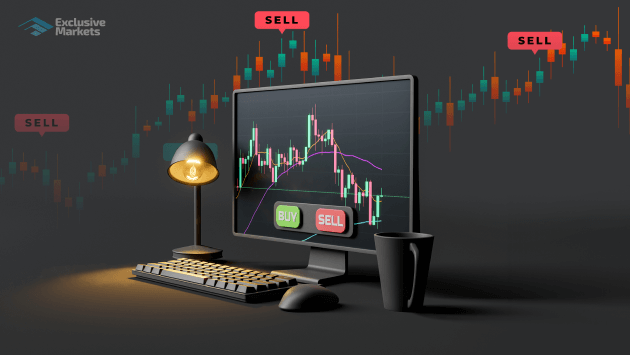
How to Get Started in Forex Trading: A Comprehensive Guide
Forex trading, or foreign exchange trading, is one of the most popular forms of trading in the financial markets. With a daily trading volume exceeding $6 trillion, the Forex market offers immense opportunities for profit. But how do you do Forex? In this guide, we will explore the fundamental concepts, important strategies, and tips that will help beginners learn how to navigate the Forex market effectively. For those looking for a great resource, check out how do you do forex trading webglobaltrading.com, which provides valuable insights into Forex trading.
Understanding Forex Trading Basics
The Forex market is a global decentralized market for trading currencies. It involves the buying and selling of currency pairs, where one currency is exchanged for another. The primary purpose of trading in Forex is to earn profit from the fluctuations in exchange rates.
The Currency Pairs
In Forex trading, currencies are quoted in pairs. Each pair consists of a base currency and a quote currency. For instance, in the currency pair EUR/USD, EUR (Euro) is the base currency, while USD (US Dollar) is the quote currency. The exchange rate indicates how much of the quote currency is required to buy one unit of the base currency.
Understanding Pips and Lots
A pip is the smallest price movement in a currency pair, typically represented to the fourth decimal point, except for pairs involving the Japanese Yen, which are quoted to two decimal places. Additionally, Forex trades are structured in lots, which represent the amount of currency being bought or sold. The standard lot size is 100,000 units, but there are also mini lots (10,000 units) and micro lots (1,000 units).
The Mechanics of Forex Trading
To start trading in Forex, you will need a broker to facilitate your trades. Here’s a step-by-step guide to begin your Forex trading journey:
1. Choose a Reliable Forex Broker
Research and select a Forex broker that is regulated and offers a trading platform that suits your needs. Consider factors such as transaction costs, leverage options, and customer service.
2. Open a Trading Account
Once you have chosen a broker, you will need to open a trading account. Many brokers offer different types of accounts, including demo accounts for practice and live accounts for real trading.
3. Fund Your Account
After opening a trading account, you will need to deposit funds to start trading. Most brokers offer a variety of funding options, including bank transfers, credit cards, and e-wallets.
4. Use a Trading Platform
Familiarize yourself with the trading platform provided by your broker. Most platforms come with tools and features to help you analyze the market and execute trades effectively.
5. Develop a Trading Strategy
A successful trading strategy is essential for consistent profits. This includes deciding on your trading style (day trading, swing trading, etc.), risk management, and trade entry and exit points. Experiment and refine your strategy using a demo account before trading with real money.

Forex Trading Strategies
There are several strategies that traders can employ in the Forex market, tailored to various trading styles and objectives. Here are a few popular approaches:
1. Technical Analysis
Technical analysis involves analyzing price charts and using indicators to predict future price movements. Traders look for patterns, trends, support and resistance levels, and use tools like Moving Averages, Relative Strength Index (RSI), and Fibonacci retracements to inform their trades.
2. Fundamental Analysis
This strategy focuses on analyzing economic indicators, news releases, and geopolitical events that impact currency values. Understanding factors such as interest rates, inflation, and employment data can provide insights into potential currency movements.
3. Price Action Trading
Price action trading relies on reading price movements without the use of indicators. Traders analyze historical price behavior to identify future price patterns and make trading decisions based on market sentiment.
Risk Management in Forex Trading
Successful Forex trading involves not only identifying profitable opportunities but also managing risks effectively. Here are some key risk management tips:
1. Use Stop Loss Orders
Setting stop loss orders is crucial to minimize losses. A stop loss order automatically closes a trade at a predetermined price, limiting potential losses in unfavorable market conditions.
2. Manage Your Leverage
Leverage allows traders to control large positions with a smaller amount of capital. However, high leverage also increases risk. Use leverage cautiously and ensure you understand the implications it has on your trading account.
3. Diversification
Diversifying your trades across different currency pairs can help reduce risk. Don’t put all your capital into one trade or one market condition.
Continuously Improve Your Skills
Forex trading is a skill that takes time to develop. Continue to educate yourself through online courses, books, webinars, and by participating in trading forums. Stay updated with market news and trends to enhance your understanding of the market.
Conclusion
In conclusion, getting started in Forex trading requires dedication, education, and a solid trading plan. By understanding the basics, developing strategies, and managing risks, you can navigate the Forex market effectively and work towards becoming a successful trader. Remember, practice makes perfect, and utilizing demo accounts is a great way to build confidence and skills before investing real money. Happy trading!




Leave a Reply